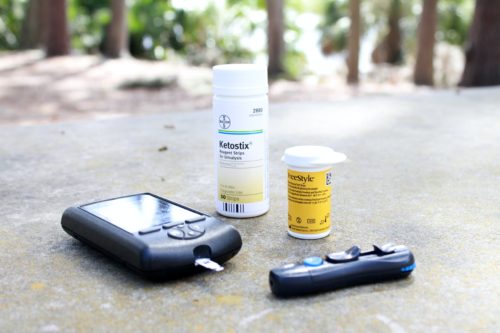Understanding Resumption of Care: Why It’s Crucial for Home Health Nursing
When it comes to providing healthcare services, continuity of care is one of the most critical aspects to ensure patients receive the most effective and seamless treatment possible. Home health nursing is particularly important in this regard, as it allows patients to receive care in the comfort of their own homes. In the world of home health nursing, “Resumption of Care” (ROC) plays a key role in ensuring the smooth transition of patients back into their home care plans after a temporary interruption, such as hospitalization or a change in care providers.
Understanding ROC and why it is crucial for home health nursing requires a deep dive into its impact on both patient care and the healthcare system as a whole. In this blog post, we will explore the significance of Resumption of Care (ROC) in ensuring proper continuity of care, addressing a patient’s evolving needs, and helping both patients and healthcare providers navigate the complexities of home health services.
What is Resumption of Care?
Resumption of Care refers to the process of restarting or resuming home healthcare services after a patient has experienced a break in care. This break might occur for various reasons, such as hospitalization, discharge from a healthcare facility, or a shift in the patient’s clinical condition that requires a temporary cessation of home health services. ROC is vital for ensuring that patients continue receiving appropriate and comprehensive care that is tailored to their current needs when they return home.
When a patient returns to home health services after a period of interruption, ROC protocols are implemented by home health agencies to assess the patient’s condition, re-establish their care plan, and integrate any necessary adjustments. These steps are crucial to ensure that patients experience a smooth, uninterrupted continuum of care as they transition back home.
The Role of ROC in Ensuring Continuity of Care
Continuity of care is a cornerstone of effective healthcare, particularly in home health nursing. Home healthcare services, which often include skilled nursing, physical therapy, and other specialized care, are meant to be continuous, addressing patients’ evolving needs in real-time. When a patient’s care is disrupted or paused, it can lead to several potential risks, including exacerbation of health issues, miscommunication between providers, or delays in necessary treatment.
The ROC process addresses these issues head-on by ensuring the patient’s care is picked up where it left off. It is a pivotal step to bridge the gap between inpatient care and outpatient or home-based care, preventing unnecessary complications or lapses in treatment.
1. Facilitating Seamless Transitions
One of the most important aspects of ROC is the seamless transition of patients from one level of care to another. Hospitalizations, for example, often lead to changes in the patient’s health condition, medication regimen, or care needs. When the patient is ready to transition back home, their care plan must reflect these updates. This is where ROC becomes vital in ensuring that any changes made during hospitalization are acknowledged, and any adjustments to the care plan are incorporated.
Home health nurses play a key role in this process by assessing the patient’s post-hospitalization needs, including monitoring vital signs, managing medications, wound care, or helping the patient recover from surgery. The ROC process ensures that these changes are addressed promptly, ensuring a smooth re-entry into the home healthcare system.
2. Addressing Changing Health Needs
A patient’s health status may change during their time away from home health services. Whether due to illness, surgery, or changes in their environment, their care needs could differ significantly upon returning home. The ROC process helps to assess these changes, ensuring that the patient’s care plan is updated to reflect their current situation.
For instance, a patient who was previously receiving physical therapy for mobility issues might experience a decline in strength or increased pain following a hospitalization. ROC allows home health nurses to adjust their treatment plan, ensuring the patient receives the appropriate level of support based on their new physical condition.
Similarly, if a patient’s medication regimen has changed due to new diagnoses or hospital treatments, ROC ensures that the nursing team is up to date on the patient’s updated prescriptions. Nurses can then monitor for potential interactions, side effects, or effectiveness of the medications.
3. Preventing Rehospitalizations
The ROC process is designed not only to ensure continuity of care but also to prevent rehospitalizations. After a hospital discharge, patients are at an increased risk for complications or setbacks that could lead to readmission. This is especially true for patients with chronic conditions, elderly individuals, or those who have undergone surgery. By carefully assessing the patient’s health condition, providing ongoing support, and addressing any changes promptly, ROC helps to minimize these risks.
Home health nurses who conduct ROC assessments can identify potential issues early, such as signs of infection, medication problems, or complications from surgical procedures. These early interventions can prevent the need for a patient to return to the hospital, which can save resources, reduce healthcare costs, and, most importantly, improve the patient’s overall health and well-being.
4. Enhancing Patient Education and Self-Management
The ROC process is also an opportunity to enhance patient education. Patients returning to home care after a hospitalization may have new instructions regarding their treatment plan, medications, or lifestyle changes. Nurses involved in the ROC process provide valuable teaching on how to manage new health conditions, the correct way to take medications, signs to watch out for, and how to stay healthy while recovering.
When patients are educated on how to manage their own care, they are more likely to follow their care plans, experience fewer complications, and feel empowered in their recovery. The ROC process reinforces the importance of patient engagement in their own health, helping them make informed decisions and adopt healthier habits.
Key Components of the ROC Process
Resumption of Care is not a singular action; it is a comprehensive process that involves several components to ensure the patient’s health is managed effectively. Here are the key steps involved in the ROC process:
1. Review of Medical Records
The first step in the ROC process is to review the patient’s medical records, including their discharge summary from the hospital or healthcare facility. This review helps home health nurses understand what changes have occurred during the patient’s absence, including new diagnoses, treatments, medications, and recommendations from the hospital discharge team.
2. Comprehensive Assessment
Once the patient’s medical history has been reviewed, a comprehensive assessment is conducted by the home health nurse. This includes evaluating the patient’s physical condition, assessing any new health concerns, reviewing medication adherence, and examining the home environment to ensure it is conducive to recovery. This assessment forms the basis for updating the care plan.
3. Care Plan Revision
Following the assessment, the care plan is updated to reflect the patient’s current needs. This may involve adjusting medication regimens, adding new therapies, or modifying the level of nursing care required. The updated care plan is communicated to all members of the healthcare team, ensuring everyone is on the same page and that the patient receives the most appropriate care.
4. Care Coordination
Coordination with other healthcare providers is essential in the ROC process. If the patient is receiving care from multiple providers, such as physical therapists, occupational therapists, or specialists, the home health nurse will ensure that the care plan is integrated across all disciplines. This coordinated approach is key to avoiding duplication of services or conflicting recommendations.
5. Ongoing Monitoring
Once the patient’s care has been resumed, the nurse continues to monitor the patient’s progress and make necessary adjustments. This may include regular follow-up visits to assess recovery, monitor for complications, and ensure the care plan is still appropriate as the patient’s health changes.
Conclusion: The Critical Importance of ROC in Home Health Nursing
In conclusion, Resumption of Care (ROC) is an essential process in home health nursing that ensures the continuity and quality of care for patients transitioning from one healthcare setting to another. By facilitating seamless transitions, addressing changing health needs, preventing rehospitalizations, and enhancing patient education, ROC plays a crucial role in optimizing patient outcomes and enhancing their overall healthcare experience.
The role of the home health nurse in the ROC process cannot be overstated. Through thorough assessments, coordination with other providers, and ongoing monitoring, they ensure that patients receive timely and effective care tailored to their specific needs. With healthcare systems increasingly emphasizing cost-effective, patient-centered care, ROC is an invaluable tool for promoting patient safety, improving outcomes, and reducing unnecessary healthcare expenditures.
Ultimately, ROC is about more than just resuming care—it’s about ensuring that patients are supported every step of the way as they continue their journey toward recovery in the comfort of their own homes. For home health nursing, the ROC process is a foundational practice that directly impacts the quality of care, the well-being of patients, and the success of the healthcare system as a whole.
Editor's Pick
Leave A Comment
Related Posts
- Published On: June 2, 2024
Transition from OASIS-E to OASIS-E1: Key Changes and Implications for […]
- Published On: May 28, 2024
Importance of Clinical Narrative and Nurse Teachings while Documenting Home Health OASIS Assessments
Importance of Clinical Narrative and Nurse Teachings while Documenting Home […]
- Published On: April 29, 2025
Navigating the Complexities of Medicare and Medicaid Reimbursement for Home […]
- Published On: April 27, 2025
Engaging Your Team Around the IPR: Turning Data into Motivation […]
- Published On: April 27, 2025
Engaging Your Team Around the IPR: Turning Data into Motivation […]

